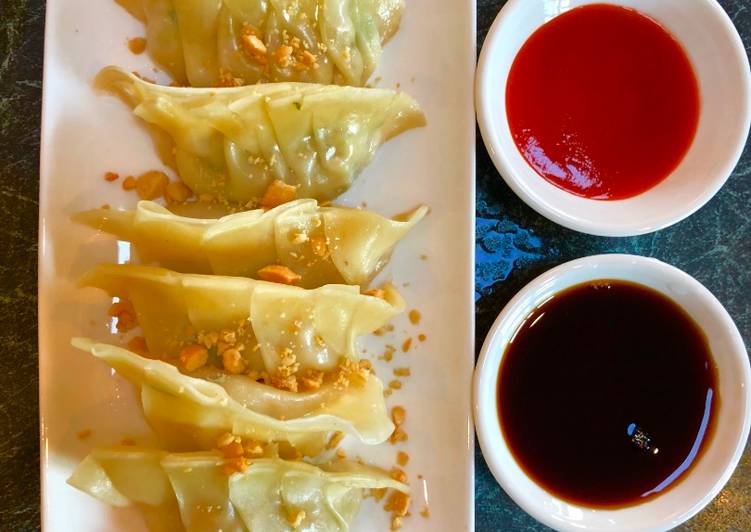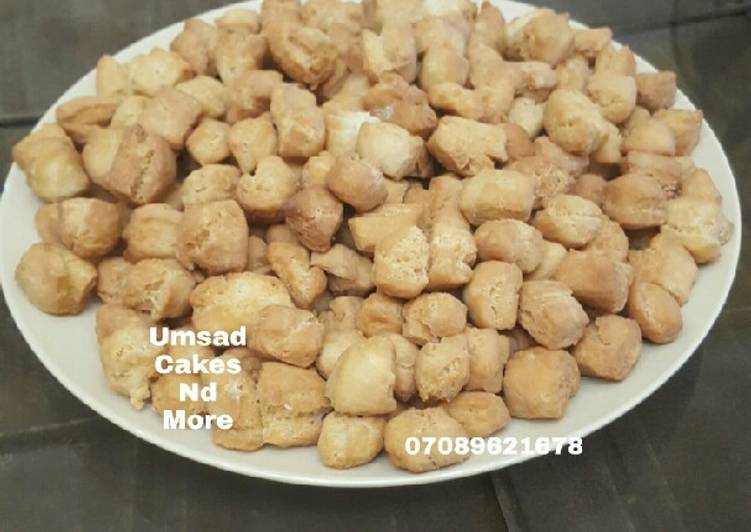
Hey everyone, hope you are having an incredible day today. Today, I’m gonna show you how to make a special dish, gyoza (japanese dumplings). It is one of my favorites. This time, I am going to make it a little bit unique. This will be really delicious.
Gyoza (Japanese Dumplings) is one of the most popular of recent trending foods in the world. It is enjoyed by millions every day. It is simple, it is fast, it tastes delicious. Gyoza (Japanese Dumplings) is something which I’ve loved my entire life. They’re fine and they look wonderful.
Great Range for Kitchen & Home Online. Free UK Delivery on Eligible Orders! Brush edge of half the wrapper with cold water.
To begin with this particular recipe, we have to first prepare a few components. You can have gyoza (japanese dumplings) using 11 ingredients and 13 steps. Here is how you cook it.
The ingredients needed to make Gyoza (Japanese Dumplings):
- Make ready 32 Dumpling wrappers
- Make ready 2 cloves Garlic
- Get 1/3 Chinese cabbage
- Take 1 handful chopped spring onions or scallions
- Prepare 1 teaspoon Salt and pepper
- Make ready 1 teaspoon Cayenne chilli powder
- Take 1 teaspoon Cumin powder
- Take 1 handful chopped Fresh coriander
- Make ready Sesame oil
- Make ready 300 grams Peeled and deveined prawns/shrimp
- Take Dipping sauces of choice
Stir in the boiling water using a knife or a pair of chopsticks until the mixture comes together as a dough. They were harder to find but thin skins are a must for the more delicate Japanese gyoza dumplings. Heat a tablespoon of cooking oil in a nonstick or cast iron skillet over medium high heat. How To Make Japanese Gyoza - Step By Step.
Steps to make Gyoza (Japanese Dumplings):
- If you have bought frozen dumpling wrappers make sure you remember to thaw them out / defrost them ahead of time.
- Shred your cabbage and onions in a blender.
- Take your prawns and squeeze as much of the moisture out as possible with some paper towels. Then shred them in a blender.
- Add the shredded ingredients to a large bowl.
- Finely chop and add the coriander.
- Finely chopped and add garlic. Also add your seasoning and spices.
- Add some seasame oil, enough so that you can mix the filling together into a paste.
- Take a single dumpling wrapper and put a heaped teaspoon in the middle.
- Wet your finger in the water and dampen the exposed bottom half of the wrapper.
- Fold the wrapper in two and pleat across, making sure you apply enough pressure so that the edges stick.
- When you have finished preparing the dumplings, heat some sesame oil in a pan. Then fry until the bottom of each dumpling is golden brown.
- Add 1/2 cup of water to the pan and cover. Leave until all the water has evaporated. The dumpling should look nice and moist - if they are still a little on the hard/dry side just add a bit more water.
- I like to serve them with soy sauce, chilli sauce and some crumbled roasted peanuts.
Using both hands, or a cheese cloth, squeeze the cabbage firmly to drain and discard the excess water (prevent your dumplings from becoming mushy) and then transfer the cabbage to a deep bowl. Make perfect pan-fried gyoza with this easy-to-follow gyoza recipe. Gyoza is the Japanese name for the half moon-shaped dumplings served in Asian restaurants as an appetiser or side dish, and this recipe will show you how to make them with a wonderfully flavoursome pork and vegetable filling. As far as dumplings go, Japanese-style gyoza are some of the simplest to make, if only for the fact that they are almost always made with store-bought, ready-to-fill wrappers at even the best dumpling joints in Japan. Fresh dough that's rolled with a rolling pin is wonderful for Chinese-style fried dumplings like guo tie, but gyoza demand thinner, stretchier dough that is rolled pasta-style by.
So that is going to wrap it up with this special food gyoza (japanese dumplings) recipe. Thanks so much for reading. I’m sure you can make this at home. There’s gonna be interesting food in home recipes coming up. Remember to save this page on your browser, and share it to your loved ones, colleague and friends. Thanks again for reading. Go on get cooking!


